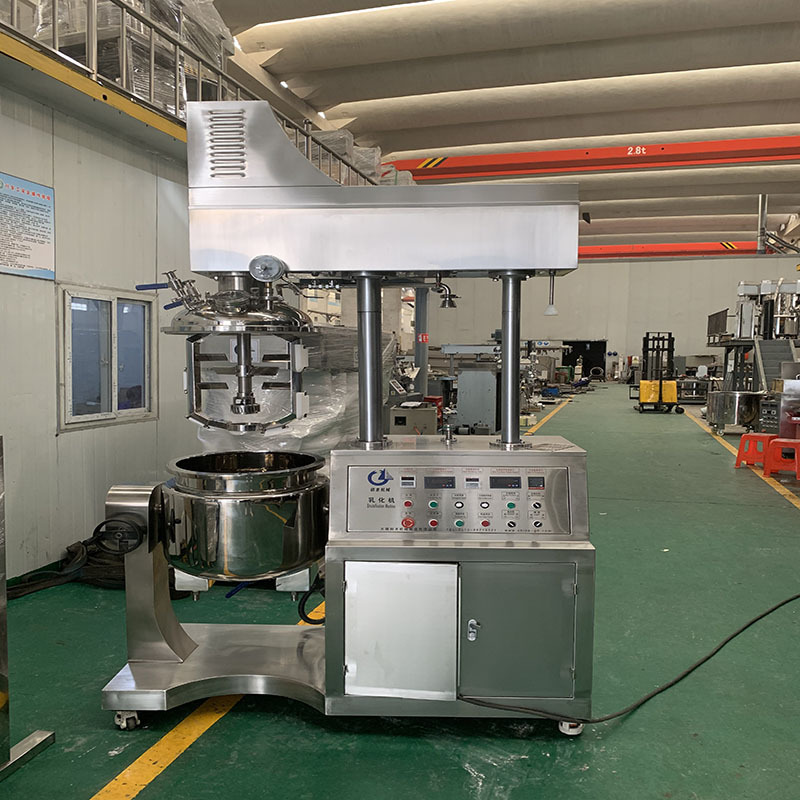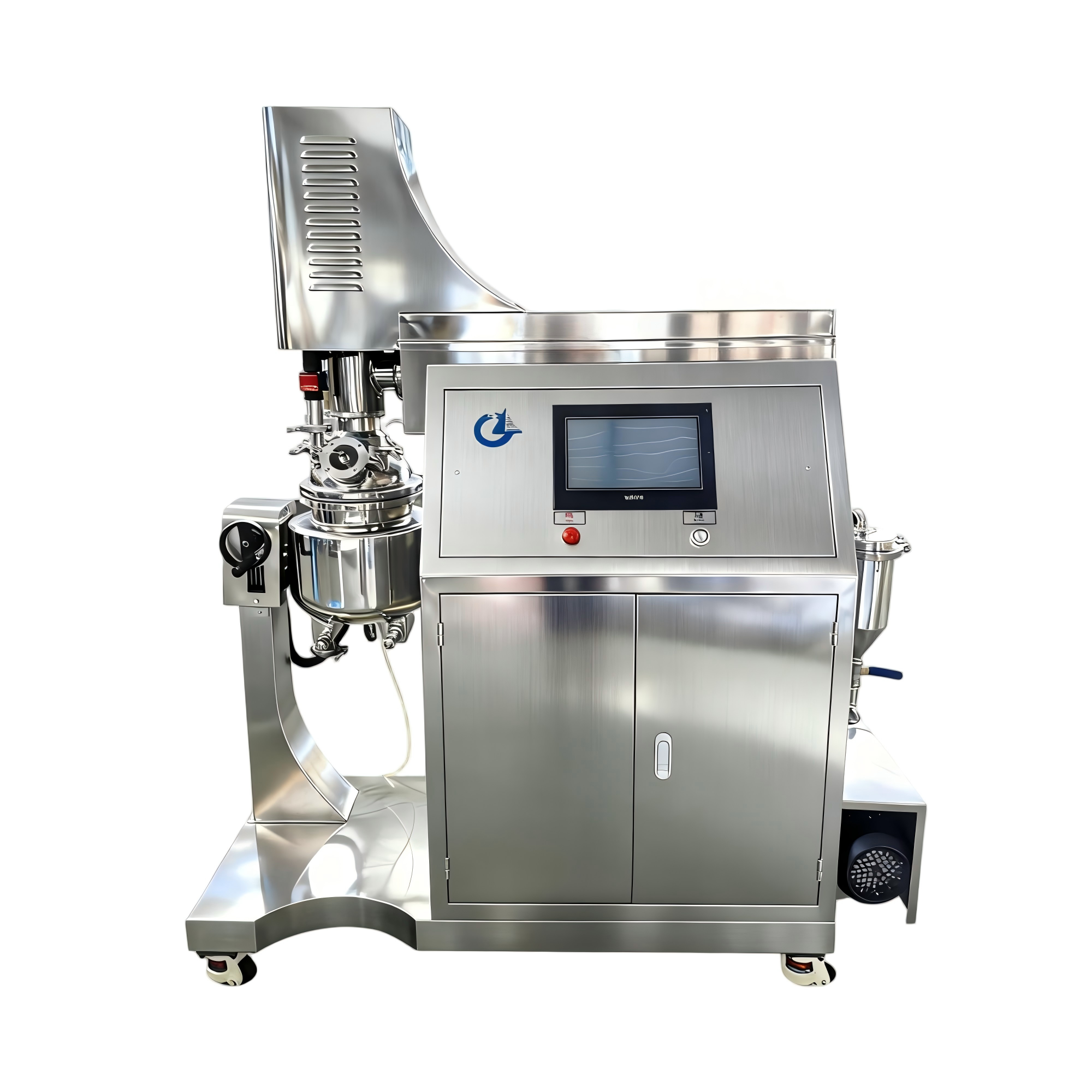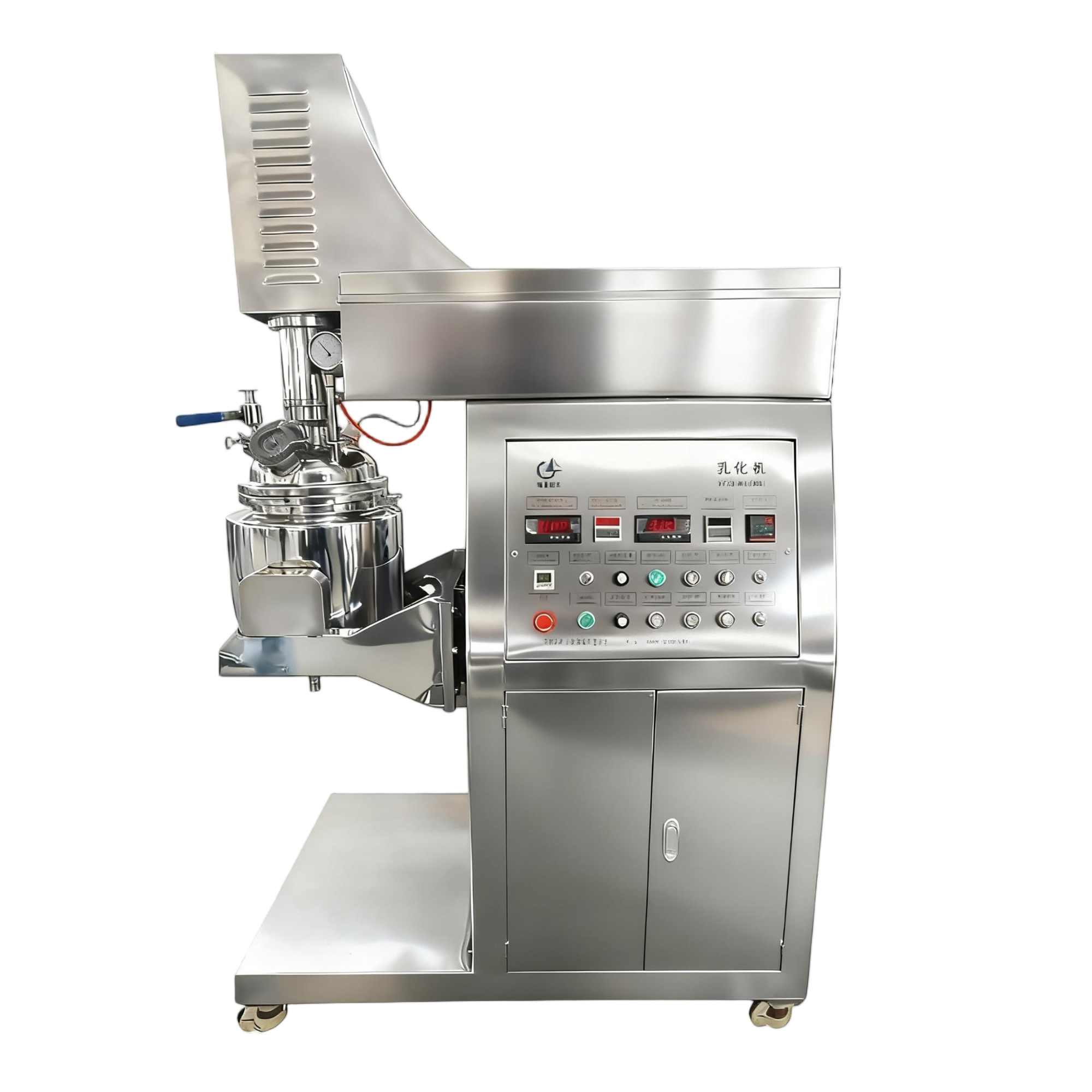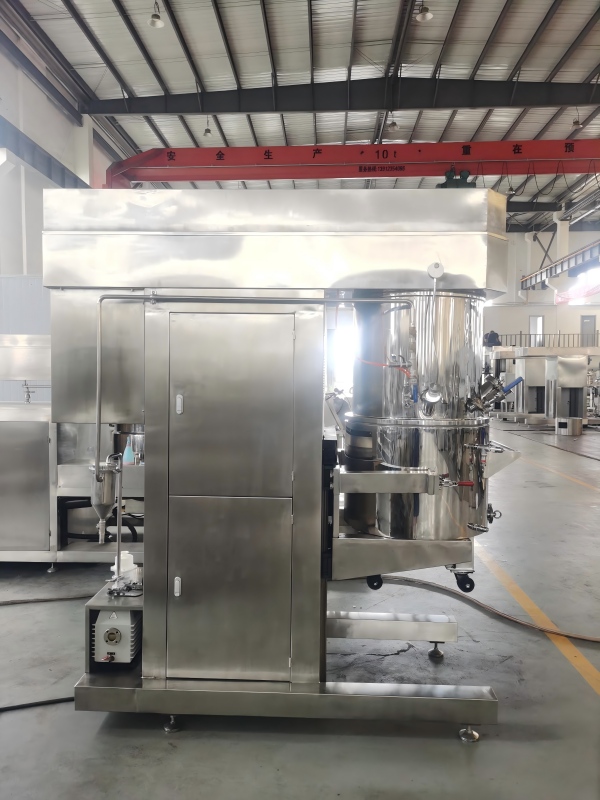Key Notes for Heating and Cooling of High-Shear Vacuum Emulsifiers
High-shear vacuum emulsifiers mainly adopt electric heating or steam heating. Electric heating is more commonly used, as it features a temperature control system composed of a temperature sensor, heating medium layer, and thermal insulation layer. This system enables easy and convenient temperature regulation without the need for additional heating equipment, significantly reducing heating costs. During medium layer heating, different media can be selected based on the processing temperature of various materials, with water and thermal oil being the most commonly used. Below are the key notes for the heating and cooling operations of high-shear vacuum emulsifiers.
1.Heating Precautions
The tank heating adopts water-bath electric heating. Temperature rise is achieved by heating the medium in the jacket via electric heating rods, with water typically used as the heating medium.
Before heating, fill the jacket completely with water (indicated by water flowing out of the vent; some medium may overflow due to expansion during the first heating).
Critical reminder: The vent hole must remain unobstructed. Never install valves on or block the vent hole, and use a rigid pipe to direct the vent to a safe area to prevent personal injury.
Only energize and start heating after adding materials to the inner tank.
Additional note: If water is used as the heating medium in the jacket, regularly replenish water to avoid burning out the electric heating elements due to dry heating. (Specific operations should comply with process requirements.)

2. Cooling Precautions
Cooling of high-shear vacuum emulsifiers generally uses tap water as the cooling water source (cooling effect is better with chilled water if conditions permit).
Open both the water inlet and outlet valves.
Adjust the opening degree of the inlet and outlet valves to control the cooling water flow rate, thereby regulating the cooling speed.
The above is an overview of the key notes for heating and cooling of high-shear vacuum emulsifiers. For more information about emulsifier units, please visit our official website!
News
- Latest News
- Solutions
- FAQ
Recommend Products
-
 5L Vacuum Emulsifying Homogenizer Mixer
5L Vacuum Emulsifying Homogenizer MixerThe 5L vacuum emulsifying mixer is a device designed for emulsifying and mixing various substances in a vacuum environment. This equipment is equipped with a mixing tank with a capacity of 5 liters and is widely applied in industries such as food, pharmaceuticals, cosmetics, and pesticides.
-
 5L PLC-Screen Vacuum Emulsifying Mixer
5L PLC-Screen Vacuum Emulsifying MixerThe 5L PLC-Screen Vacuum Emulsifying Mixer is a device designed for emulsifying and mixing various substances in a vacuum environment. This equipment is equipped with a mixing tank with a capacity of 5 liters and is widely applied in industries such as food, pharmaceuticals, cosmetics, and pesticides.
-
 10L Vacuum Emulsifying Homogenizer Mixer
10L Vacuum Emulsifying Homogenizer MixerThe 10L Vacuum Emulsifying Mixer is a device used for emulsifying and mixing various substances in a vacuum environment. It is commonly used in industries such as food, cosmetics, and pharmaceuticals.


 English
English Russian
Russian French
French Spanish
Spanish Portuguese
Portuguese Korean
Korean Japanese
Japanese Thai
Thai
![Installation, Commissioning, Maintenance and Upkeep of 20L Double Planetary Mixer [Technical Version]](/web/uploads/image/20251115/Rz1O1nQrou307600Q66XxAP07No478kl.webp)




